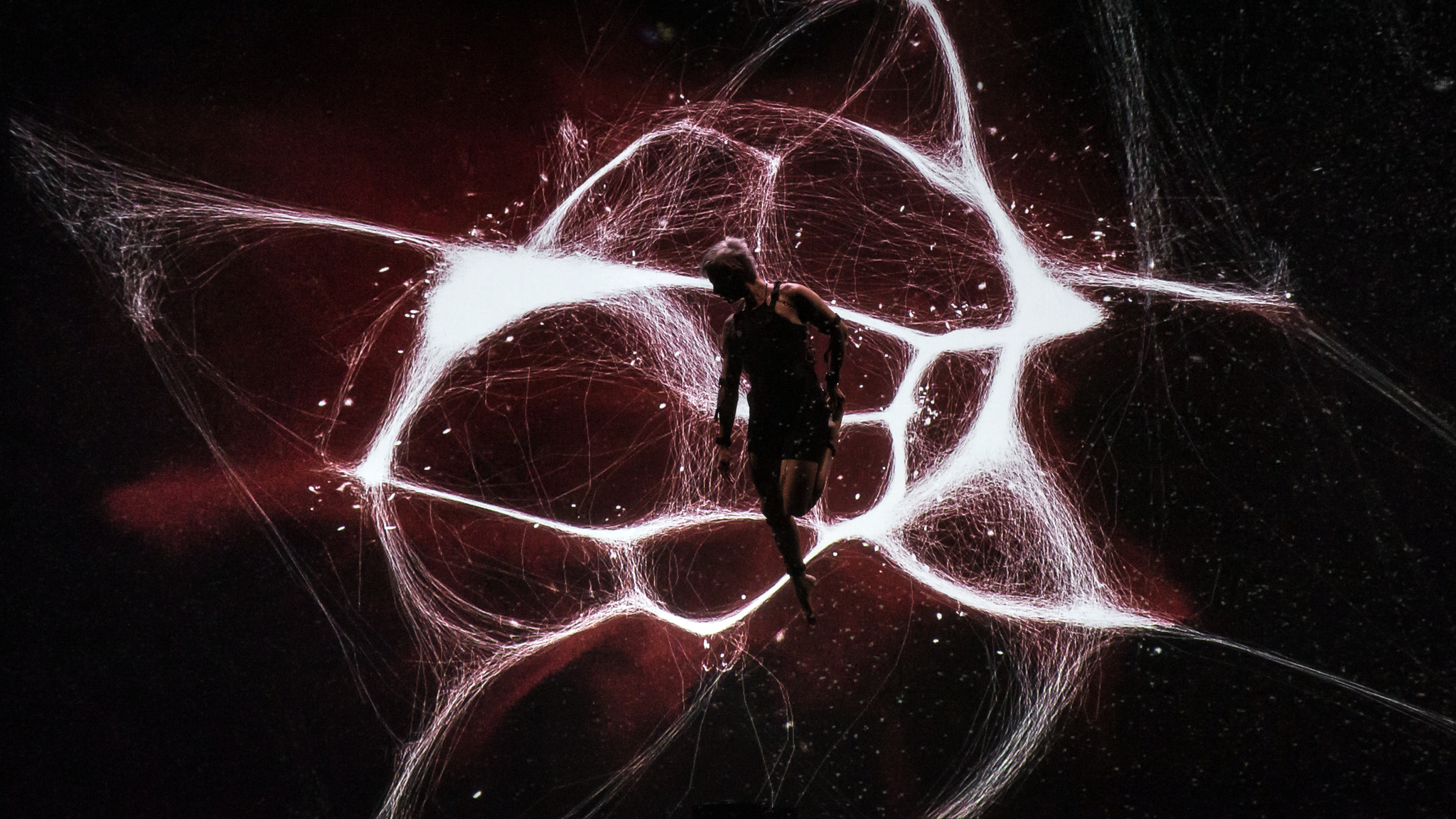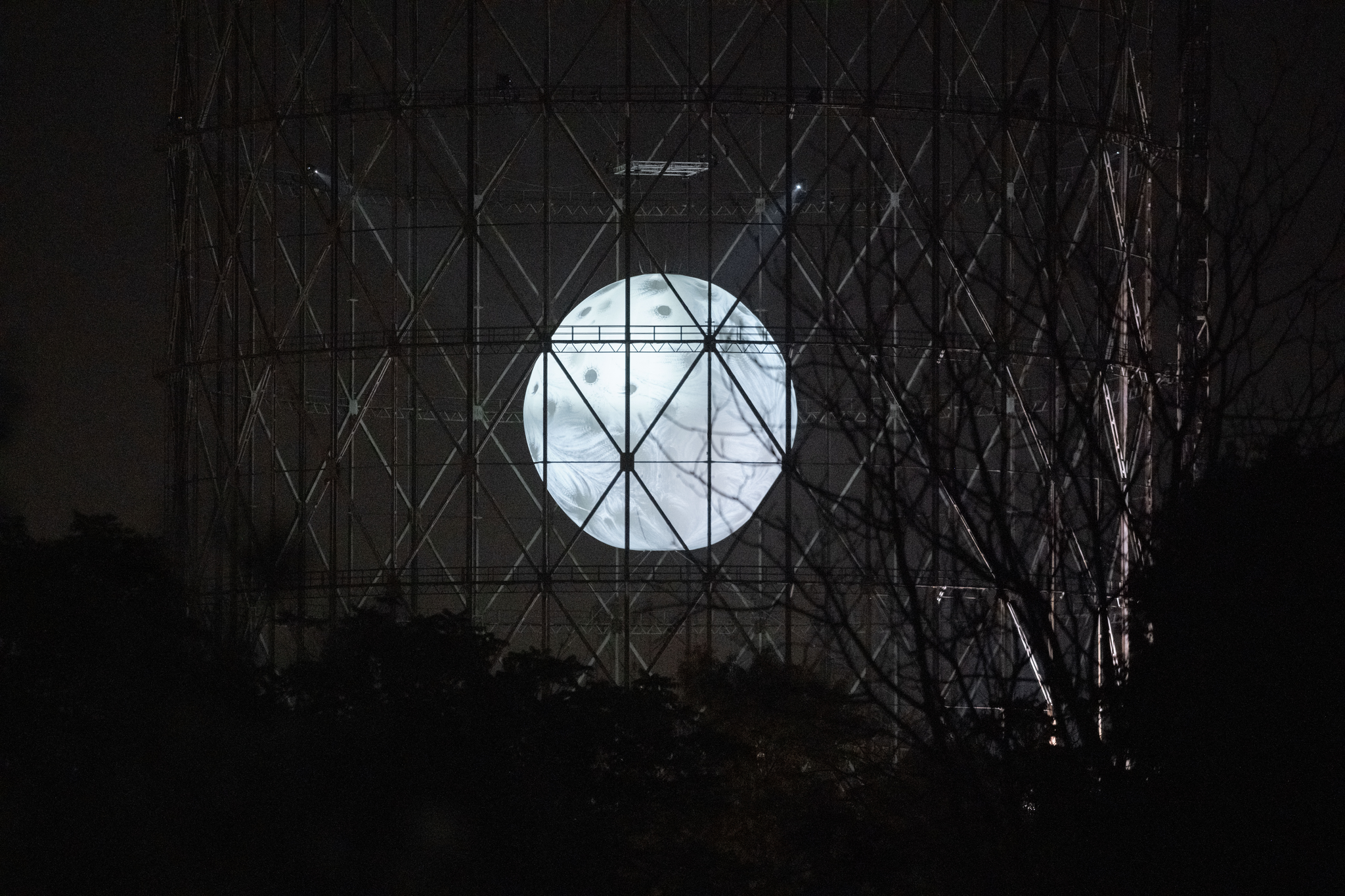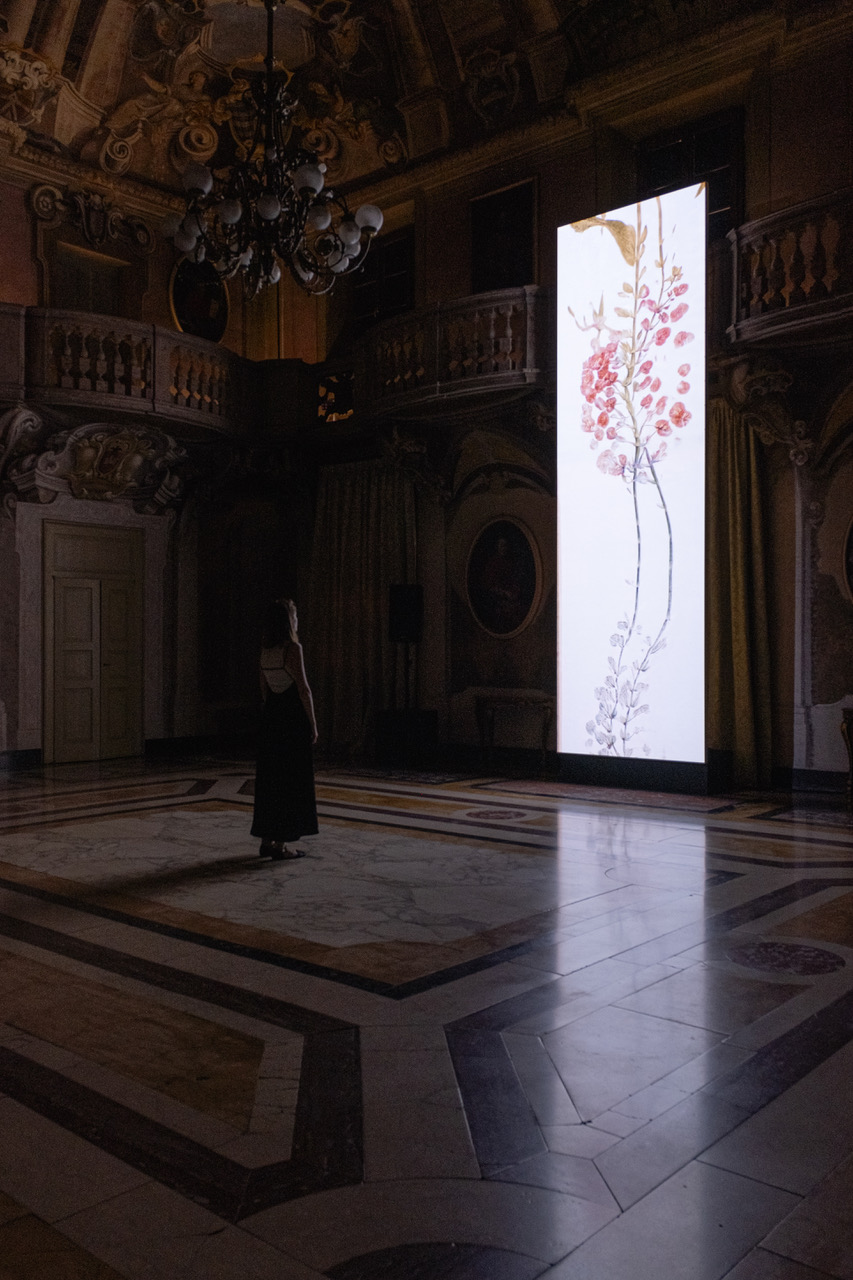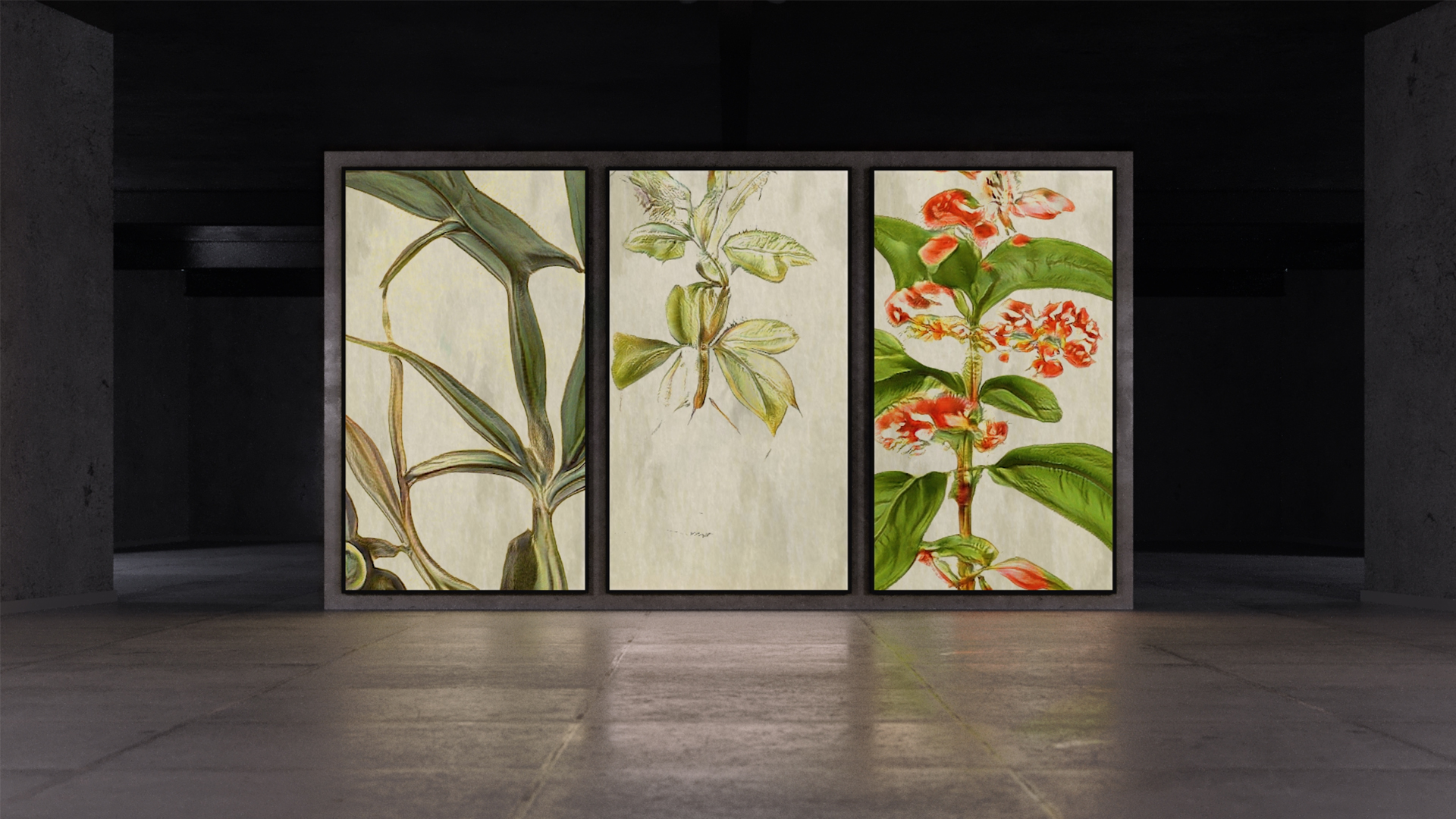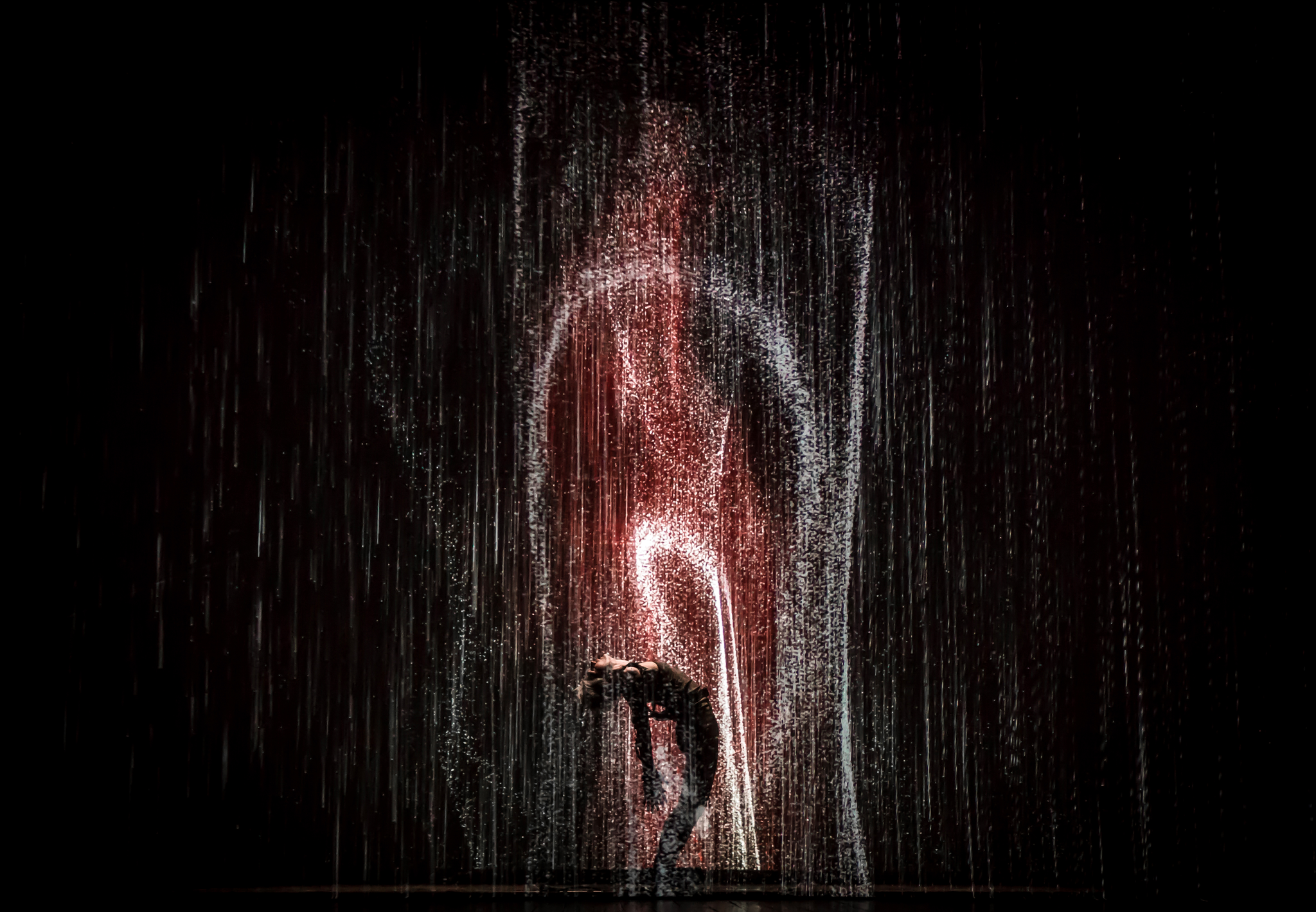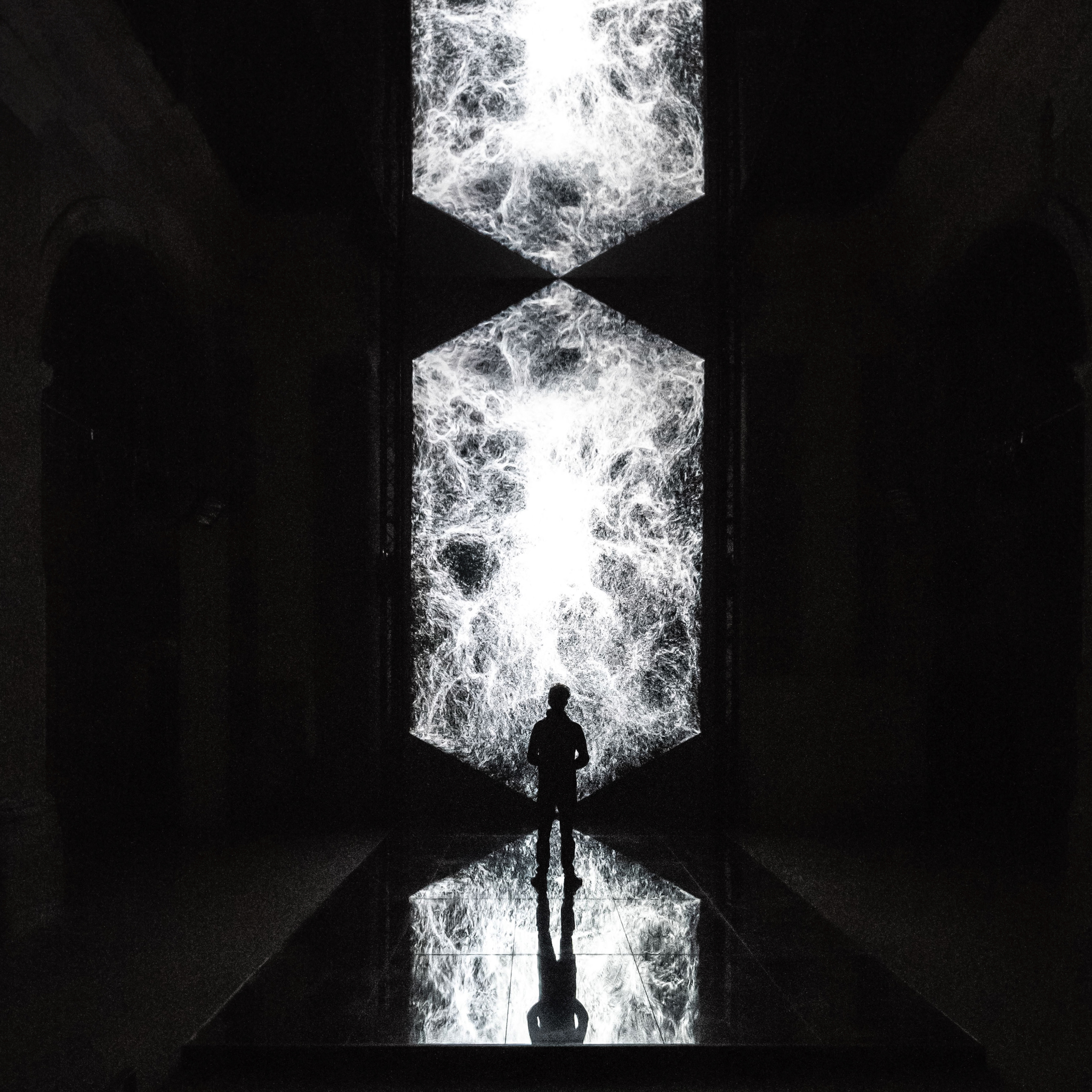FUSE*: a blend of art, science, and technology .
Interview with Fuse* art studio.
by Veronica Di Geronimo, July 2023
Fuse*, the art studio based in Italy specialised in digital art and innovation, has navigated through fifteen transformative years of technological advances, staying at the forefront of the rapidly evolving world of digital and multimedia art. The way in which the art lab manages the vast team of diverse specialists, and how it collaborates with external experts is an interesting case of a modern art studio networking in an interdisciplinary blend of art, science, and technology.
Thanks to the following interview it is possible to dive into their artistic process and methodologies, and to understand the intricate coordination required within their team to balance aesthetic criteria and technological aid.
Veronica Di Geronimo: Fuse* was founded in 2007, during the years the technologies have changed and so have the skills required to use them. Although your team is very large and made up of people with different expertise, I was wondering if you work with any external experts.
Fuse*: Of course, as you have well noted, in our team competences have naturally and organically changed according to the progressive evolution of the artistic and technological world. For the development of our artistic projects, although we directly follow the whole process, from the conception to the production phase, we seek transdisciplinary dialogues with researchers, professors, artists, musicians, philosophers, and all inspiring personalities who can lead us to deepen specific aspects of a given research. I am thinking of the collaboration with the Society for Neuroscience for the project Fragile (2021), which gave us the opportunity to work with a large number of tomograms (very high-resolution scans) of human neurons to study the effects of psychophysical stress on the brain. Or the work Sogni (2023), which we are currently developing with the support of the Laboratory of the Psychophysiology of Sleep and Dreaming at the University of Bologna. The enhancement of the scientific heritage (such as databases, archives, and datasets) through artistic language and the use of visual metaphors is an interesting thread running through our recent research.
Working in a large factory implies coordination, division of tasks, and an interdisciplinary working method. I suppose that the production of your installations involves different research directions being carried out in parallel, I am thinking of software development and the aesthetic and expressive line. How do you bring these different requests together?
The work plan is the foundation of every process in our studio. We use various intra-team coordination platforms (Miro, Trello, Podio, Slack), visual, graphical tools and integrated management and monitoring software. We use the RASCI model to create project teams, assign tasks and identify responsibilities. We then organise interim and periodic reviews (with micro-teams or plenary sessions), as well as feedback and debriefing sessions at the end of production to assess quality parameters, visual consistency, workflow optimisation and effectiveness.
Talking about artistic research methodology, how do you structure the development of your projects in terms of execution phases? Do you have a working 'protocol' or does it change from time to time? If it does change, are there recurring steps?
We have a flexible working format for our artistic productions, starting with cyclical moments throughout the year for open-ended research on technologies and visual expression, continuing with moments of internal exchange and a brainstorming phase where ideas and visual tests of various kinds are collected. This is followed by a phase of content analysis and mapping, which leads to concept writing and initial prototyping. As soon as we have the possibility of a venue or physical space for an exhibition, we begin the planning for the technical and practical aspects of the work. The method is obviously replicable, and it can be modulated according to specific situations and places. Indeed, spatiality and location influence, and even inspire, the artwork. I am thinking of the Gazomentro in the Ostiense district of Rome, whose dynamism of the space and the acoustic features had an impact on the conception of Luna Somnium (2022).
Randomness, metamorphosis, and permanence are evolutionary concepts that your works often refer to. They are also cultural and figurative paradigms on which art has always fed, and which find expression in your works through software or generative intelligence. Did this parallelism between aesthetic-formal and genetic-biological evolution lead to the adoption of GAN in Artificial Botany? Beyond this specific case, what are the criteria that lead you to choose a particular technology?
Broadly speaking, we are very inspired by nature, not just botany in the strict sense, but nature as humanity in its physical and social laws and in the relevant micro-connections involved. In our practice, we see technology as one of the expressive tools available, not the end goal. Therefore, we are often moved by a concept, a keyword, a feeling, or a thought that we want to convey, and we ask ourselves what the best way is to express it. At the same time, we are very curious about what is happening in the latest cutting-edge technological research. In the autumn of 2019, when we were exploring some open-source datasets of botanical illustrations from the late 18th century, the Style GAN 2 algorithm had just been released. The concept of the organic production of two competing neural networks, trying to simulate the production of synthetic images like the original, reminded us of the work of the illustrators we were working on. It seemed to us an interesting parallel, with the possibility of creating a fruitful dialogue; thus, we started to investigate this technology.
To answer your question beyond the specific case of Artificial Botany, it is the message that drives the choice of a particular technology. What makes it suitable for inclusion in the narrative is its propensity to be integrated into a wider search for meaning.
You pay a lot of attention to experimenting with techniques and media that translate certain aesthetic aspects of the virtual into the physical world. For Artificial Botany, you began very specific research into the production of colour, which led you to work in close contact with craftsmen. Can you tell us about this phase of the project?
The intention was to show the cyclicity in the generative process of Artificial Botany, also including some physical artefacts such as prints and sculptures in the series. After years of dialogue with the Medulla laboratory in Modena, which is specialized in screen printing using natural pigments, we started a collaboration to find a technique that could enhance the synthetic colours produced by the GAN. We came up with the concept of pentachromats screen printing, which was achieved by splitting the different colour levels (CMYK) and then transferring them onto high-resolution screens made with 40-micron diameter silk threads. The next step was to identify the most suitable pigments to represent the primary colours. Chlorophyll and ford were chosen for green and blue, curcuma and cochineal powder for yellow and red, and a mixture of ford, indigo and madder for black. Then, each colour mixture was applied to the screen with a squeegee in several manual passes at varying pressures. The finished work was obtained thanks to the fusion of a completely synthetic production process with an ultra-traditional refinement of an artisanal printing technique.
What role does science play in your artistic research? Is it a source you draw on when choosing themes and topics? Is it a discipline that plays an active role in the design phase? If so, how is it involved in the research and experimentation?
Science is one of our inspiration sources. As we design and write, we delve into the research of anthropologists, physicists, chemists, and theorists from history and contemporary debate. Science is a great breeding ground for wisdom and interesting perspectives on complexity. In general, we are fascinated by the layering of meaning, and in our work, we want to share and conceive experiences on multiple levels, both perceptual and symbolic. An important example of our artistic production is Dökk, our second live media performance, which premiered at the Biela Noc festival in Bratislava in 2017. The performance takes the form of a grand visual synesthesia in which light, sound, dance, and space interpenetrate. Dökk (“darkness” in Icelandic) tells the story of a life from birth to death through ten themed rooms. Three years of work have been devoted to creating a work capable of stimulating a sense of deep empathy by conveying two fundamental concepts: synchronicity and the unpredictability of human existence. To this end, a system was developed to process on stage the result of the close interaction between different data generated in real-time: the analysis of the sound, the dancer's movement, her heartbeat, and the sentimental analysis of the content shared on social networks. The combination of these data ensures that each performance takes on forms that are always different and unique because they are the result of the randomness and unpredictability of the information being analysed. As soon as the audience enters the room, they are greeted by the real-time sound of Elena Annovi's heartbeat collected by a sensor. From the beginning of the journey to the final room, the real-time analysis of the heart rate is linked to the twinkle of one of the stars that make up the universe visualised in the scene. The pulsation of this star remains linked to that of the heart from the beginning to the end of the performance. The idea was inspired by the discovery of the existence of a group of binary stars (the so-called "heartbeat stars") whose luminosity is described by a graph very similar to an electrocardiogram. The presence of this tiny luminous pulsation within the visual composition of the whole show is a small example of how, in our work, we are fascinated by the possibility of creating parallels with the physical world around us.
Talking about the Multiverse (2018), how did the theory of theoretical physicist Lee Smolin influence the development of the work? Is it possible to have any concrete examples?
The very first genesis of Multiverse lies in a specific phase of Dökk's production. At the time we were analysing the theories of black holes and their possible representations; we were immersed in Smolin's research and how specifically an analogy of Darwin's law of evolution could be seen applied to the birth of the universes of our galaxy, proposing the model that Smolin calls Cosmological Natural Selection. The idea of creating a monumental installation in which the viewer could have a poetic experience of an infinite gaze, through an audiovisual installation and a generative component following each cycle of the work, seemed to us a significant possibility and a challenge to be taken, both in terms of a change of scale (Multiverse was one of the first large-scale installations of our production) and in terms of a holistic approach to the subject.
Your installations explore the expressive possibilities of particles, atoms and electromagnetic fields through both visualization and sonification. What is the purpose of the aesthetics of invisible processes?
The intention is to create works that can inspire, suspend the ordinary and stimulate thoughts and imagination. Works that move different levels of feeling and perception, speaking universal languages and sharing profound messages of empathy and community. Fuse* has always linked its development to that of the community in which it operates, supporting, promoting, and devising projects that aim to spread culture and knowledge. Therefore, producing works that reveal invisible processes allows us to enhance incredibly small details, as well as to create experiences that seek to reflect on themes that are as universal as they are complex.
Artist short bio
Established in 2007, Fuse* is an art studio pioneering the fusion of different disciplines, from light and sound to space and movement. Led by the founders Luca Camellini and Mattia Carretti, the team embraces a holistic, experimental, and collaborative approach. Besides their artistic endeavors, Fuse* champions cultural growth, co-producing the electronica music and digital art festival NODE since 2016. Their innovative productions have been showcased globally, at venues like Mutek, Sónar, National Museum of China, Hong Kong Institute, and more.
Learn more about their work at https://www.fuseworks.it/works/
The series of interviews has been conceived as a complementary initiative of CARE (Creative Artistic Research Ecosystem) LAB, a transdisciplinary laboratory that stems from the partnership established by The Fine Arts Academy of Rome and The National Institute for Nuclear Physics (University of Roma Tre), within the framework of the European Project EU4ART_differences. I express profound gratitude to the artists who have contributed to this series: José Angelino, Federica Di Carlo, Fuse*, and Luca Pozzi who accepted to take part in this project with generosity and kindness.
